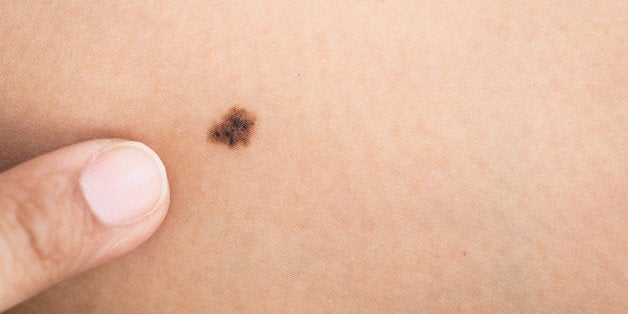
The number of cases of melanoma is increasing faster than any other potentially preventable cancer in the United States. The CDC reports that melanoma rates doubled between 1982 and 2011.
The American Cancer Society estimates that there will be about 76,380 new melanomas diagnosed in 2016. They also estimate that there will be about 10,130 deaths attributed to melanoma.
Melanoma is the most deadliest of skin cancers. It forms in the melanocytes which are the cells that give the skin its pigment or color.
Melanoma is the least common of the skin cancers yet has the highest risk of spreading to other parts of the body.
What You Can Do To Prevent Skin Cancer
Avoid the strong sun between 10AM and 2PM.
If you are outside during those times make sure you are in the shade.
Wear long sleeves and hats.
Sunglasses can help protect the eyes.
Do not use tanning beds.
Risk Factors for melanoma
If you have fair skin and light eyes you are at higher risk to develop melanoma but no one is immune from melanoma. African Americans can also develop melanoma.
Sun exposure or tanning beds can increase your risk of developing melanoma.
A history of sunburns especially when you are a child will increase your risk.
Aging is a risk factor. Melanoma is more common as you get older but even children can develop melanoma.
Having moles especially abnormal moles referred to as dysplastic will increase your risk of melanoma.
A family history of melanoma will increase your risk.
Patients who are immunocompromised such as those with AIDS or who have cancer and are on chemotherapy will have as higher risk. This patients who have had an organ transplant and are on immunosuppressive drugs are more likely to develop a melanoma.
Exposure to different chemicals such as Polychlorinated biphenyls (PCBs), vinyl cholride and radiation may increase your risk of melanoma. The EPA banned the use of PCBs in 1979
Carrying an abnormal gene referred to as the BRAF gene will increase your risk. it is estimated that 50 % of melanoma patients have this gene.
Perform regular skin cancer self examinations
Melanoma is one of the few cancers that you can detect unlike most of the other cancers that we can develop.
Melanoma can occur anywhere on the skin which includes the mucous membranes of the lips and anus. Self examinations can help detect melanoma at an earlier stage.
The more often you do self examination the more familiar you will become with the moles that are own your body.
Lets face it, most of us do not go for regular skin checks. It is important to do so.
Use a full length mirror and a smaller hand held mirror for difficult areas that are harder to examine. Perform self examinations as recommended by the American Academy of Dermatology.
Look for,
Asymmetry - the shape of one half does not match the other
Border - border irregularity
Color - color changes within the lesion
Diameter - size greater than 6 millimeters is more concerning
Evolving - the mole has changed over time
Others concerns include a mole that is itching, bleeding. or has grown smaller satellite lesions around an existing mole.
Melanoma can also occur in the eye, this is why it is important to have a thorough exam by an ophthalmologist.
Treatment of melanoma
Most melanomas are treated with surgery. New treatment modalities are being used that target specific proteins that melanoma uses to help avoid our bodies immune defense systems. Medications may be added if the melanoma is deeper or has spread to lymph nodes and other areas.